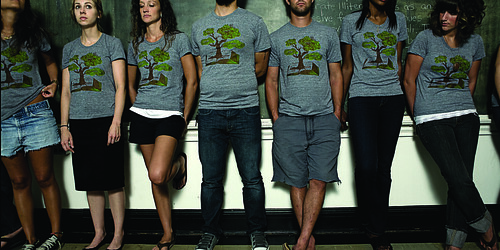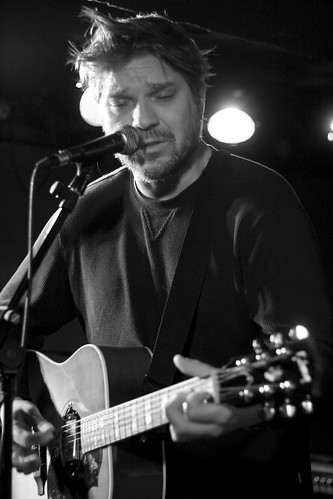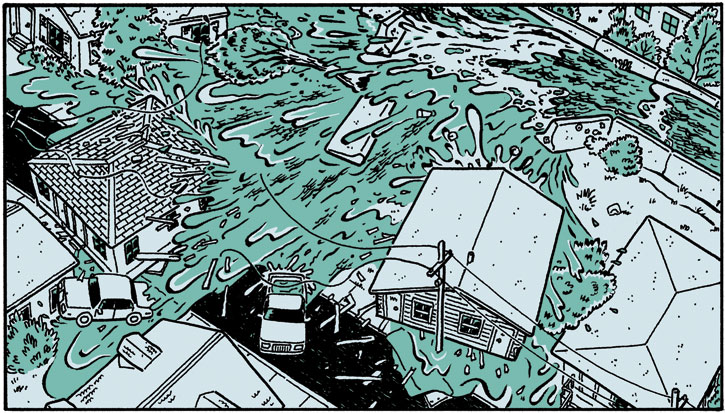
New Stories from the South 2009
Edited by Madison Smartt Bell
Algonquin, 2009
Recently discussed what southern literature means with a non-literary person to speak, meaning he's a banker of some sort but likes reading and reads for pleasure. Imagine that. Anyway, we started talking about Clyde Edgerton. He kind of knows Clyde and he wanted to know what I thought about his work. I said I hadn't read it, but from my understanding he's a pretty classic Southern writer--all kind of rural and pastoral with a small town oddity attached to it. He said that was pretty much it. And I wondered aloud why "southern literature" doesn't include Atlanta gangs or Miami real estate deals or beach scenes from Florida and North Carolina*. "That's not the literary south," my friend said. And he's right. I feel that most southern literature is all about mosquitoes and high grass and slaves and plantations and moonshine and long-winding oak-covered paths where sweet tea and fried chicken is served at all hours of the day. Those are my stereotypes and as a person born and raised in the South so to speak, I usually avoid a "southern writer" like I avoid other southern "delicacies" like boiled peanuts and Gone With The Wind velvet movie posters--it's just not for me.
With both trepidation and hope do I enter into a book like New Stories from The South. I want the stories there to be new, to be dangerous, to be funny, to be Southern but not stereotypically Southern--I want them to exist as the South really does exist, somewhere still hung up on its eccentricities, but moving forward in some exurban boom of suburban dream meets agrarian past. Threaten me with how our consumerist SUV culture is at war with our Christian heritage, how the funny Yankee accents in Charlotte and Atlanta are turning everything on their head, how college football influences business deals, how our temperate climate is making us the new-new frontier. It's a blessing and a curse that the South has such a defined literary lineage, no New England or Midwest or West Coast story series gets as much play as a series like this one.
Now with those desires out in the open, here's a disclaimer. Those stories may very well exist in this book and I wouldn't know it. I didn't read the whole book. I read most of it. I don't read many short story collections, but when I do it's a breath of fresh air, there's not reason I have to read the whole thing. The stories have been completed, I don't have to go on and on if I don't want to, especially not in an anthology. So those stories I so boldly clamor for may very well be here, but I didn't see them. That doesn't mean I didn't see some good stories however...oh, and another thing...I didn't read in chronological order. More freedom, more joy.
When I opened this and saw who some of the contributors were I immediately went for Kevin Wilson. I've just recently found Mr. Wilson, though there is a chance I've met him in an off-handed manner as it turns out we were both at the same university at one time--him a few years older than myself. But, it has not been a slow trickle, it has been a wave with Mr. Wilson as I found three of his stories within three or four days of one another and haven't seen any more since. This story, "No Joke, This is Going to Be Painful," was one of those and it was about an ice fight and I loved it. It's not necessarily a Southern story, though it does take place in Tennessee, but the setting doesn't matter--it's about a jealous sister who is between dead-end jobs and starts flirting around with a married man that she met at a party with her sister. Short stories have to have such a tight crucible, where every circumstance is perfectly aligned and Wilson makes a quirky, sarcastic, snot-nosed story that's funny and is what the South needs. Why should all witty sarcasm stay in Brooklyn I ask?
The same with Michael Knight's "The Grand Old Party," a funny story about adultery and the courage it takes to confront it. These guys both have fun, breezy styles, Southern but not; the type of South I like to read about. And they're both from Tennessee. Which reminds me: how does one define Southern for these anthologies? Some of these stories could take place anywhere, do not specifically mention the South, and some of the writers now live in New York or somewhere else non-Southern.
I did read some other stories, but let's get to the ones I did not. That one about horses, I didn't. Too serious, maybe? Jill McCorkle? No, I don't know why, I've read some blurbs I didn't like before. Geoff Wyss and his story "Child of God?" No reason, I just didn't open there. This whole anthology stuff is so messy. I chose Knight's story because it was in the Oxford American. That influenced me. I think I read Stephanie Soileau's because it was right after Wilson's and in a journal called Nimrod. Just being honest here.
There were also a lot of New Orleans stories in here, and this is the South's 9/11 of sorts, I guess. I'm surprised how much literature has come out about it, and more to come I'm sure...it's the perfect circumstance to set up a story and the fact that so many writers have passed through New Orleans, like New York, makes a huge difference as well. Writing the New Orleans story is becoming a rite of passage (if it wasn't already) for the modern Southern writer just like a New York story is for everybody else in the northeast and an L.A. story for everybody out west. I read at least two New Orleans stories here, though I think there's a few more and enjoyed Stephanie Dickinson's the best--her mix of fantasy, desperation and attitude sets her writing apart. The FEMA city is one of those bold New Orleans masterstrokes that will continue to serve the Southern writer for several more years to come, I'm sure.
The favorite for me is probably "Night Glow" by Holly Wilson. It has this crass dirt bike riding juvenile delinquent of sorts paired up with a young girl whose life consists of vegetable gardens, Quaker puppet shows, a neighborhood friend obsessed with gymnastics and a pen pal who lives far away that she corresponds with four times a year. Wilson pumps this story with so many passing details that it's hard to keep straight, though each one means something important and vital, and though the story washes over fairly quickly there's a lot of remnants left afterwards to mull and chew. Like a good story should do. This whole story could be a complicated novel, but Wilson does not worry about possibilities and just gives us what it is--which contains all the details that a modern Southern story should, including octopus tattoos and blind puppet masters. Those are the ingredients for success in a good Southern story, in case anyone is looking for a formula to rip off and copy and then make millions in a major motion picture.
But that's the beauty of this anthology, I don't have to read the whole thing to appreciate it. And others who find this and pick it up will certainly enjoy it for the stories I didn't read, perhaps they read the exact opposite of what I did. But be sure of this--the stories here are written well with engaging ideas about how to deal with this South. It's emerging, they're emerging, we are all emerging in trying to navigate the south in a new world and a new century. And New Stories from the South 2009 isn't an end to that search, but just an excellent guidepost along the way.
*One "southern" book I'm excited to read, but haven't yet is John Brandon's Arkansas which I understand contains some seedy Southern drug-abusing elements and might somehow fit my ideal. Not that drug abusing is my ideal. Um, this has gotten off-track...
More after the jump...














































